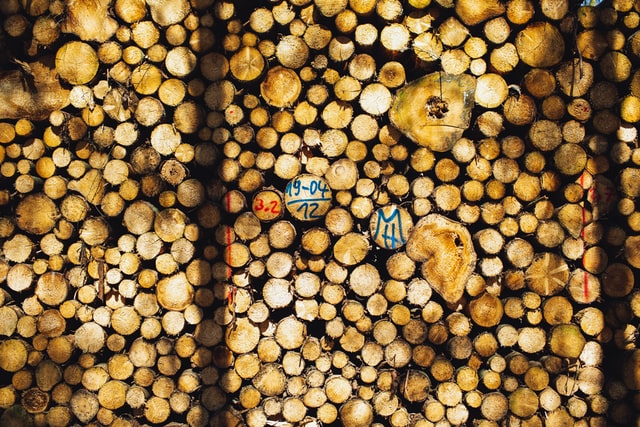More and more companies are implementing carbon offsetting programs based on planting trees. Though on paper planting trees to compensate for CO2 emissions may seem like a good idea, it raises some concern.
So if you are looking for websites that plant trees, I must encourage you to think twice because many times, reforestation doesn’t work as a relevant solution to climate change – particularly if we’re talking about companies betting on carbon offsetting as the first step of their sustainability strategy.
The truth is that, as a climate change solution, planting trees is a quite complex issue. As such, the massive development of tree planting startups and programs isn’t necessarily good news for the fight against global warming.
Let’s try to better understand why.
Planting trees will not save the climate
Let’s start by remembering that planting trees is not a miraculous solution to tackle global warming, as we’ve covered in a previous article where we’ve highlighted the importance of building up soil.
Yes, if managed wisely and respectfully, trees can part of the solution thanks to their natural carbon storage function.
But in practice, just like Bill Gates said in this book “How to avoid a climate disaster”, this will never be enough when faced with the limited surface space on Earth and the (still) growing greenhouse gas emissions.
The reforestation efforts needed to offset our emissions using trees would be far too great given the intensity of our carbon emissions and as such, planting trees programs aren’t able to meet CO2 capture requirements.
Well, right, but how about planting a couple as part of a reforestation effort to offset a company’s carbon emissions? What can possibly be wrong with that?
Is planting trees a good sustainability strategy?

Actually, many wrong things may happen as a result of financing the plantation of trees.
Starting with many reforestation projects that are poorly designed and consist of planting monocultures in inappropriate ecosystems and end up doing more bad than good as they bring invasive specifies or compete with other trees for water.
Or, not so bad but still misleading, tree plantations that are managed as economic projects rather than as ecosystems, using climate change as an “excuse” to get funded.
So here’s a tip for you: if you’re looking into a project where many different tree species are being or will be planted, really think twice. Most specifications recommend planting around 2-4 species, depending on the project.
Also, when poorly maintained and managed in the medium term, reforestation projects may not last long, or at least not enough to absorb carbon sustainably and effectively.
As a result, even though projects to plant trees may be implemented with the best intention, without adequate resources allocated to their management, many trees end up not thriving – and thus not having a significant impact as a carbon sink.
Trees: the scapegoat of global emissions
What’s also concerning is that the current fuss around tree planting projects as a strategy to offset carbon emissions is a diversion from the real challenges that a meaningful climate transition encompasses.
How so?
Because by giving the illusion that planting trees is a relevant and effective solution to offset carbon emissions and mitigate climate change, private and public actors end up doing it for their own personal branding.
We see them saying they are acting to protect the planet when in fact, they often bet on misleading carbon offsetting programs while the real sources of emissions – which come from the supply and operation chains – keep running and polluting as usual.
And so, through carbon accounting sleight of hand, many companies and individuals nowadays use tree planting as an alibi to say they are “carbon neutral” or that they have “zero emissions” or even “zero impact”.
It is thanks to these carbon offsetting programs that airports or fossil-fuel companies can claim they are “carbon neutral” since they compensate for their emissions by planting trees.
Another nonsense – one highly questionably from an ethical perspective – are companies that are marketing their products as “climate neutral”. This kind of gives us, consumers, the feeling that their purchases don’t have a negative impact, doesn’t it?
Seriously, do we really think that planted trees really make up for the pollution from manufacturing – in terms of energy and materials used, to say the least – of millions of thousands of, for example, plastic cans?
You get where I’m heading when I say reforestation and planting tree programs are being usurped as they are so often used to hide – aka compensate for – global emissions, don’t you?
Plant trees to save Earth? The issue is way more complex.

Let us remember that the real challenge today is, first of all, to radically transform our production models and reduce our consumption so that carbon emissions get reduced right at the source.
And such reductions – drum rolls – mean a huge redesign of our social and economic structures. We’ll go there another time.
For now, global greenhouse gas emissions continue to increase – between 1 and 2% per year before Covid19 – each year. Contrarily, they must fall by 5% per year over the next 30 years to meet our climate objectives and guess what? Virtually no company is able to say today that its carbon emissions are falling in absolute terms.
Planting trees will not solve this background problem.
All the energy and money used by private actors to plant trees would probably be better invested in developing solid climate strategies. Strategies that are based on a profound reorganisation of business models and manufacturing mechanisms that need to have the circular economy, eco-design or biomimicry principles at their core.
Unfortunately, companies still have a long way to go before they can get there – as studies such as this one from the Carbon Disclosure Project and UN Global Compact regularly point out. If only we weren’t in a race against time.
Trees aren’t a technology, they are just trees.
Should we concede that all the buzz around reforestation has a positive externality, as it allows people to invest some money in financing projects that at least do something better than fuelling overproduction or rent schemes? After all, planting trees is always better than not doing it, right?
I’m not sure.
Because another problem is emerging: with the boom in tree planting projects, forests are gradually becoming a purely commercial object that’s slowly becoming part of the start-up scene.
The future of trees is now dependant on growth prospects, marketing strategies or scale-ups made possible by investors seeking quick returns. Trees have never been this sexy – nor seen as valuable outside of their natural context, the natural world – have they?
That’s right, trees have undoubtedly become attractive to a business world that’s searching for climate virtue and spends little effort paying for tree planting programs. But from an ecological point of view, this is a very dangerous road to travel.
Because today’s largely deregulated market capitalism has never really proven, throughout history, that it is able to put the general interest above its own interests – it simply isn’t designed that way.
Therefore, there’s a huge risk that with all this tree planting fuss, forests – which are originally a complex ecosystem, capable of storing carbon but also enriching soils, serving as a shelter for biodiversity and making territories resilient – will gradually be completely impoverished by the multiplication of climate compensation projects.
Forests would then become an exploitable (and overexploited) resource like every other, rather than being valued and cherish as (part of) an ecosystem whose diversity builds up – natural, cultural and social – resilience and should, therefore, be protected and wisely restored.
Planting fewer trees and saving the Earth by not Let’s not commodifying it.

Abnormal! Ridiculous! Absurd! How is it possible!?
We’re far from reacting like this as we see thousands of hectares of forests being destroyed every year to give room to agricultural sites, mining or industrial facilities or urbanisation projects.
Native forests – incredible biodiversity hotspots – are being destroyed and replaced by monocultures in places like the Amazon or Congo. While from a carbon counting perspective (or ecological KPI) that might look like something good since it will allow for a larger number of trees to be planted – overall it is not.
Because when it comes to biodiversity and ecosystemic health – which is ultimately connected to human health – it is the number of hectares preserved in existing, primary or sustainably managed forests and their resilience that truly matters.
The use of wood is also a much more fundamental success criterion: wood that dies or is transformed into cardboard does not store carbon sustainably. But these criteria are not of interest to the business world, because they do not speak to those who look at the world only with return on investment glasses or data that can be communicated to investors and shareholders.
Let’s leave trees and forests alone
Through financing plantation projects, sometimes with good intentions, companies end up doing more harm than good. Voluntarily or not, they end up contributing to the commodification of life and the commercialisation of ecosystems.
This is the exact opposite of what should be put in place to protect nature – which should be more aligned with preservation, restoration and regeneration.
That’s why it is important to raise awareness of the fact that focusing on a company’s business model and carbon impacts can be reduced at the source. Acting across supply chains and making more responsible – and bold – choices in terms of land use and forest-related products is very important.
This is what society expects from responsible businesses – and what future generations need, in order to have a liveable planet. They businesses to go the extra mile while leaving forests alone, managed by forest actors with expertise in ecological matters rather than by the harmful economic and market logic.
Note: this piece contains some ideas which were originally written by Clément Fournier, whose article is available here]
[Photos by Luca Bravo, Kaleidico, Claudio Schwarz and Markus Spiske on Unsplash]

